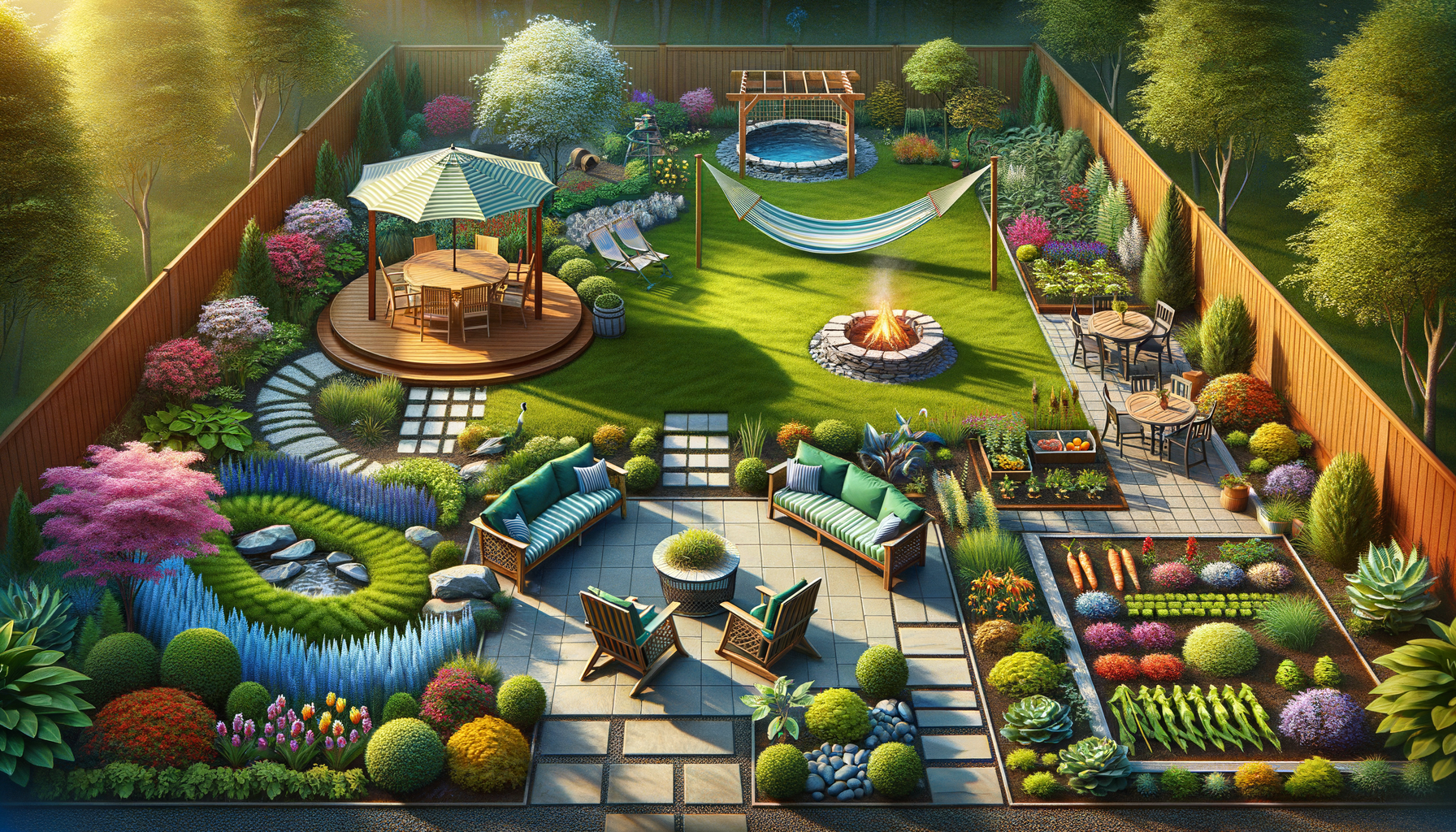Introduction to Backyard Landscaping
As the chill of winter fades and the promise of warmer days beckons, spring emerges as the ideal season to revitalize your outdoor spaces. Whether you have a sprawling garden or a modest backyard, landscaping can significantly enhance the beauty and functionality of your area. The art of landscape design not only boosts the aesthetic appeal but also increases the value of your property. By incorporating thoughtful elements, you can create a serene retreat right outside your door, perfect for relaxation and entertainment alike.
Landscaping is more than just planting flowers and trimming hedges. It’s about harmonizing nature with your personal style and the architecture of your home. A well-designed landscape can provide a peaceful sanctuary, a vibrant play area, or a sophisticated venue for gatherings. This article will explore ten simple yet effective backyard landscaping ideas to help you transform your outdoor space this spring.
Understanding Your Space
Before diving into landscaping projects, it’s crucial to understand the unique characteristics of your backyard. Assessing your space involves considering factors such as sunlight exposure, soil type, and existing vegetation. These elements will guide your design decisions and ensure that your landscaping efforts are sustainable and suited to the environment.
Start by observing how sunlight moves across your backyard throughout the day. This will help you decide where to plant sun-loving flowers or where to position shade structures. Additionally, testing your soil will inform you about its pH level and nutrient content, which is vital for selecting compatible plants. Existing trees and shrubs should also be evaluated to determine if they can be integrated into your new design or if they need to be pruned or removed.
By taking the time to understand your space, you can create a landscape that not only looks beautiful but thrives in its natural environment. This foundational step sets the stage for implementing the creative ideas discussed in the following sections.
Incorporating Functional Elements
Functionality is a key component of successful landscape design. While aesthetics are important, your backyard should also serve your lifestyle needs. Consider incorporating functional elements that enhance usability and comfort in your outdoor space.
For instance, if you enjoy outdoor dining, a well-planned patio area with comfortable seating and a dining table can create the perfect spot for family meals or entertaining guests. A fire pit or outdoor fireplace can extend the usability of your backyard into cooler evenings, providing warmth and ambiance.
Paths and walkways not only add structure but also guide visitors through your garden, creating a sense of journey and exploration. Use materials like stone, gravel, or wood to match the style of your home and garden. Additionally, consider installing lighting to enhance safety and highlight key features of your landscape at night.
By blending functional elements with your design, you create a versatile outdoor space that caters to both relaxation and entertainment.
Choosing the Right Plants
The selection of plants is a critical aspect of landscape design. The right plants can transform the look of your backyard, providing color, texture, and even fragrance. When choosing plants, consider factors such as climate, maintenance level, and the overall theme of your landscape.
For a low-maintenance garden, opt for native plants that are adapted to your local climate and soil conditions. These plants typically require less water and are more resistant to local pests and diseases. Perennials are also a great choice as they return year after year, providing consistent beauty with minimal effort.
If you have a specific theme in mind, such as a tropical oasis or a cottage garden, select plants that align with that vision. Incorporate a mix of trees, shrubs, flowers, and groundcovers to add depth and interest. Consider the bloom times of your plants to ensure that your garden offers visual appeal throughout the seasons.
Thoughtful plant selection enhances the aesthetic and ecological value of your garden, creating a harmonious and sustainable landscape.
Adding Personal Touches
Your backyard is an extension of your home, and adding personal touches can make it uniquely yours. Personalization can be achieved through the use of decorative elements, art, and even furniture that reflects your style and personality.
Consider incorporating garden art such as sculptures, water features, or wind chimes to add character and charm. These elements can serve as focal points or subtle accents within your landscape. Additionally, the use of color in furniture, cushions, and planters can bring vibrancy and cohesion to your design.
For a more intimate touch, create themed areas like a zen garden or a whimsical fairy garden. These spaces can offer a sense of escape and wonder, inviting exploration and enjoyment. Personal touches not only enhance the visual appeal but also create a space that feels inviting and reflective of your tastes.
By infusing your personality into your landscape design, you create an outdoor space that is not only beautiful but also meaningful and enjoyable.
Conclusion: Embracing the Transformation
As spring breathes new life into the world around us, it presents an opportunity to refresh and rejuvenate our outdoor spaces. By implementing these simple backyard landscaping ideas, you can transform your garden into a haven of beauty and tranquility. Whether you aim to create a vibrant social space or a peaceful retreat, thoughtful design and planning will ensure your backyard becomes a cherished extension of your home.
Remember, landscaping is a journey rather than a destination. As you nurture your garden, it will continue to grow and evolve, offering endless possibilities for creativity and enjoyment. Embrace the transformation and let your backyard become a testament to the harmony between nature and design.








